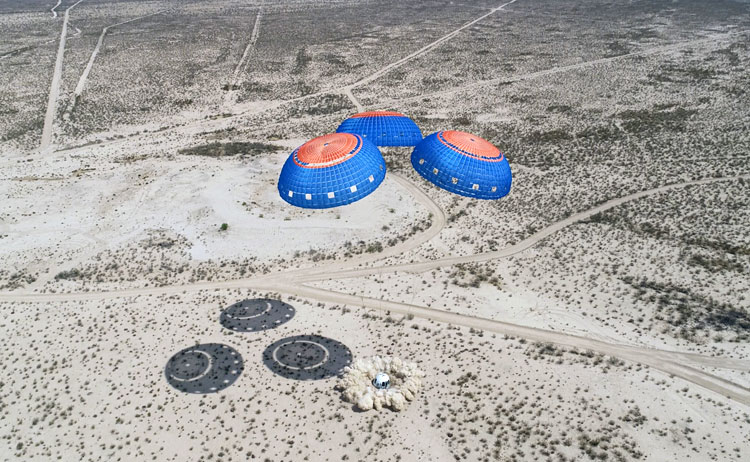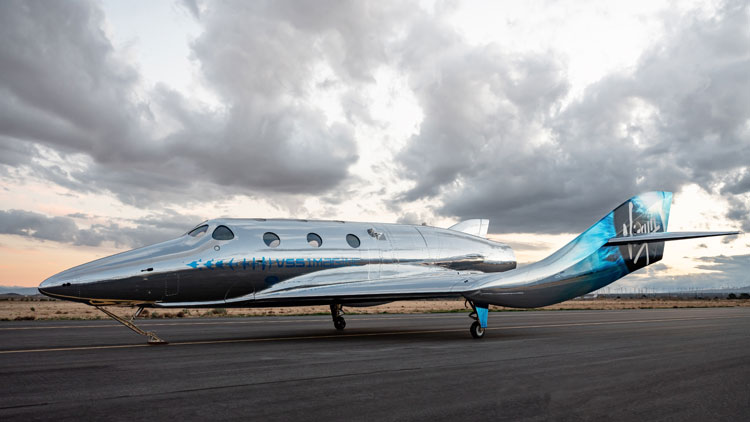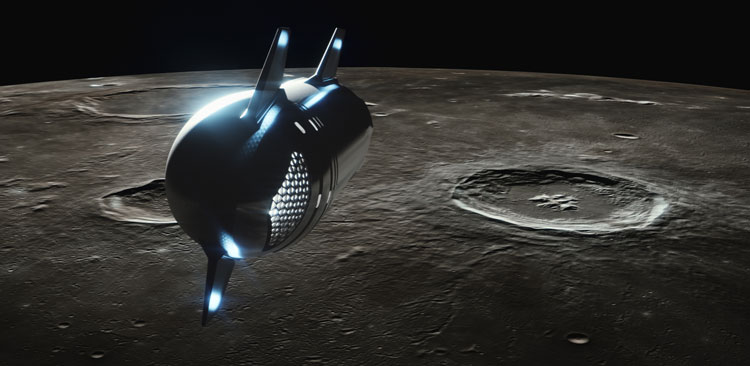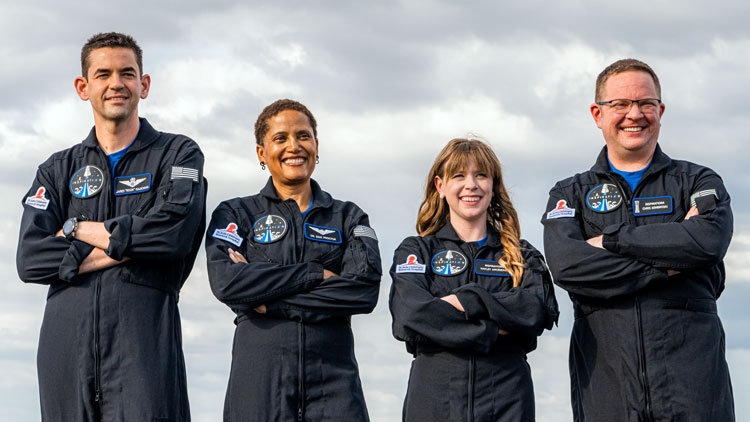INDIAN ARMED FORCES CHIEFS ON
OUR RELENTLESS AND FOCUSED PUBLISHING EFFORTS

SP Guide Publications puts forth a well compiled articulation of issues, pursuits and accomplishments of the Indian Army, over the years

I am confident that SP Guide Publications would continue to inform, inspire and influence.

My compliments to SP Guide Publications for informative and credible reportage on contemporary aerospace issues over the past six decades.
The extravagant space affair
As companies reach closer to their developments of taking people beyond the earth, the excitement around space tourism continues to build
On April 12, 1961, Soviet cosmonaut, Yuri Gagarin became the first man to travel into space. Six decades after that we have had human presence constantly in space for over 20 years now at the International Space Station (ISS) and are nearing the start of the era of space tourism. In 2001, the American businessman Dennis Tito garnered attention by becoming the first space tourist on April 28 aboard the ISS. Space tourism has only gained prominence since then with many private companies now exploring the opportunity to take humans into space. We take a look at the three most prominent companies and where are they placed in launching the space travel times.
Blue Origin
Amazon founder Jeff Bezos’ aerospace manufacturing company, Blue Origin, is all set to launch its first astronaut crew to space this year on July 20 aboard the New Shepard. Named after Mercury astronaut Alan Shepard, the first American to go to space, this is a reusable suborbital rocket system designed to take astronauts and research payloads “past the Kármán line – the internationally recognised boundary of space”, states Blue Origin.

The company has been flight testing New Shepard and its redundant safety systems since 2012 and the programme has had 16 successful consecutive missions to space and back, the latest one on April 14. A series of simulations to rehearse astronaut movements and operations for future flights with customers on board were conducted during the mission. Also onboard today was Mannequin Skywalker and more than 25,000 postcards from Club for the Future, the nonprofit founded by Blue Origin.The crew capsule reached an apogee of 3,47,574 ft. above ground level with the maximum ascent velocity of 2,234 mph.
Blue Origin, is set to launch its first astronaut crew to space on July 2021 aboard the New Shepard. The latest high bid on the company’s website for a seat in the flight stood at $2,800,000.
The New Shepard also has a booster that makes use of the landing gear which deploys for touchdown while the capsule can occupy six astronauts each having their own window seat onboard the autonomous vehicle. What is most exciting is that Blue Origin is offering one seat on this first flight to the winning bidder of an online auction. At the time of writing this story, the latest high bid on the company’s website stood at $2,800,000.
Virgin Galactic
Virgin Galactic is one of the early names that showcased the possibility of people travelling into space, calling itself the world’s first commercial spaceline. Recently the company completed its third spaceflight and the first ever spaceflight from Spaceport America, New Mexico. The spacecraft, VSS Unity, achieved a speed of Mach 3 after being released from the mothership, VMS Eve, and reached space, at an altitude of 55.45 miles before gliding smoothly to a runway landing at Spaceport America, Virgin Galactic informed. Virgin Galactic fulfilled a number of test objectives during the flight, including revenue-generating scientific research experiments as part of NASA’s Flight Opportunities Programme, collecting data to be used for the final two verification reports.
Virgin Galactic completed its third spaceflight, fulfilling a number of test objectives including carried of revenue-generating scientific research experiments as part of NASA’s Flight Opportunities Programme.
In March this year, Virgin Galactic had unveiled the company’s first Spaceship III in its growing fleet, the VSS Unity is the Spaceship II class vehicle. Named the VSS Imagine, the spaceship is a display of Virgin Galactic’s innovation in design and astronaut experience. Ground testing for VSS Imagine with glide flights are planned to commence this summer from the same Spaceport America in New Mexico. This third generation of spaceship will lay the foundation for the design and manufacture of future vehicles for spaceflight, the company noted. At the end of the first quarter, the company informed that approximately 600 Future Astronauts have registered with them. Like Virgin Galactic's other spacecraft, Imagine is also designed to take people and scientific experiments to and from suborbital space. Though the original dates and plans have often been postponed, Virgin Galactic is optimistic.

SpaceX
Elon Musk’s SpaceX that has brought the commercial space programme to spotlight is also not far behind in its ambitious plans for space travel. In March this year, SpaceX announced the opening of the application process to join its Starship flight around the moon for the dearMoon mission. In 2018, Japanese entrepreneur, Yusaku Maezawa, had announced the world’s first private passenger mission to fly by the Moon aboard starship. The project opened the applications for eight civilians to join Maezawa on the week-long Starship mission around the Moon in 2023. Meanwhile, Maezawa has booked another trip to space, to visit the International Space Station in December this year aboard a Russian Soyuz spacecraft from Baikonur Cosmodrome in Kazakhstan, kicking off a 12-day organized mission to the orbiting lab.
SpaceX announced the launch of Inspiration4 Mission, the world’s first all-civilian mission to orbit mid-September.
Apart from this, in February SpaceX announced the launch of Inspiration4 Mission, the world’s first all-civilian (commercial astronaut) mission to orbit. Jared Isaacman, founder and CEO of Shift4 Payments, has donated the three seats alongside him aboard SpaceX’s Dragon to individuals from the general public. The four crew members are said to be representing the mission pillars of leadership, hope, generosity, and prosperity through Isaacman, Hayley Arceneaux (a physician assistant & pediatric cancer survivor), Chris Sembroski (who has supported the St. Jude mission: Finding cures. Saving children), and Dr. Sian Proctor (entrepreneur) respectively.

Scheduled to lift off mid-September this year, the Inspiration4 crew members will circle the planet for three days at an altitude about 80 miles (130 km) higher than the ISS. In the process, the four will set several records, both as individuals and together, including flying on the first space mission without a professional astronaut on board, the company stated. It also added that the crew will receive commercial astronaut training by SpaceX on the Falcon 9 launch vehicle and Dragon spacecraft, orbital mechanics, operating in microgravity, zero gravity, and other forms of stress testing as well as emergency preparedness training, spacesuit and spacecraft ingress and egress exercises, and partial and full mission simulations.
The NSR Global Space Economy report released in March stated that this commercialization of space is unlocking new use-cases, new end-users, and overall driving a $1 trillion opportunity.

Companies like Gateway Foundation and Boeing are also working on expanding the space tourism horizons through the plans of setting up a space hotel, and having more private tourist involvement in the future ISS missions respectively. As more and more countries continue to explore the outer space and the privatisation of the sector grows, many more companies are likely to be added in the list. The NSR Global Space Economy report released in March this year stated that this commercialisation of space is unlocking new use-cases, new end-users, and overall driving a $1 trillion opportunity. “Space and satellite infrastructure, applications, and satellite connectivity are likely to exceed $1 trillion, growing at 4.5 per cent CAGR until 2029” hence massively expanding the market opportunity between 2019 and 2029.
As the first space tourist, Tito had paid about $20 million for that trip and many other millionaires followed suit in the following decade. While the hype continues to build, space travel is still a very luxurious idea and will most probably stay so at least for a few more decades before it becomes accessible to the population. Nevertheless, the idea of more humans setting out on expeditions beyond the planet and witnessing the expanse of the universe is certainly thrilling and promises exciting adventures and discoveries ahead.





